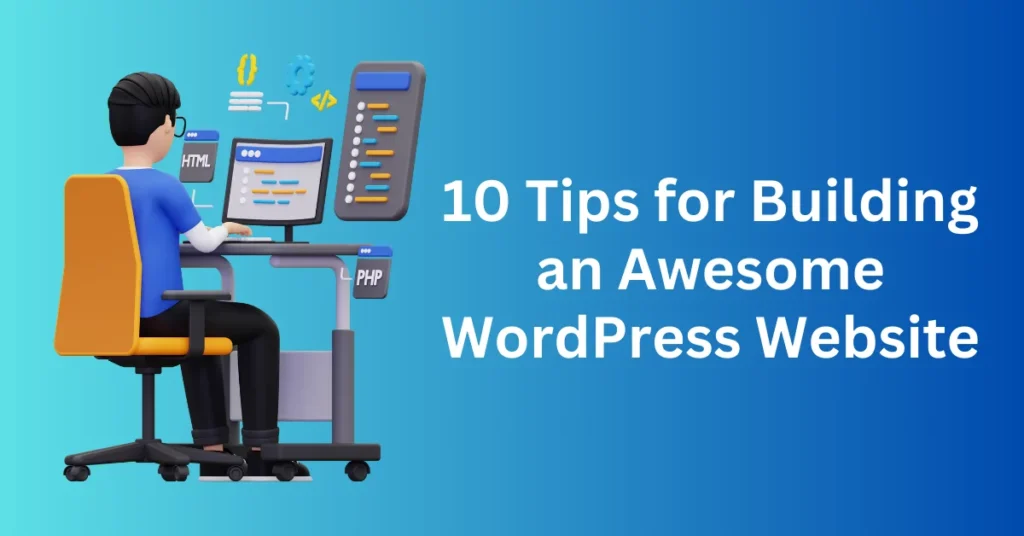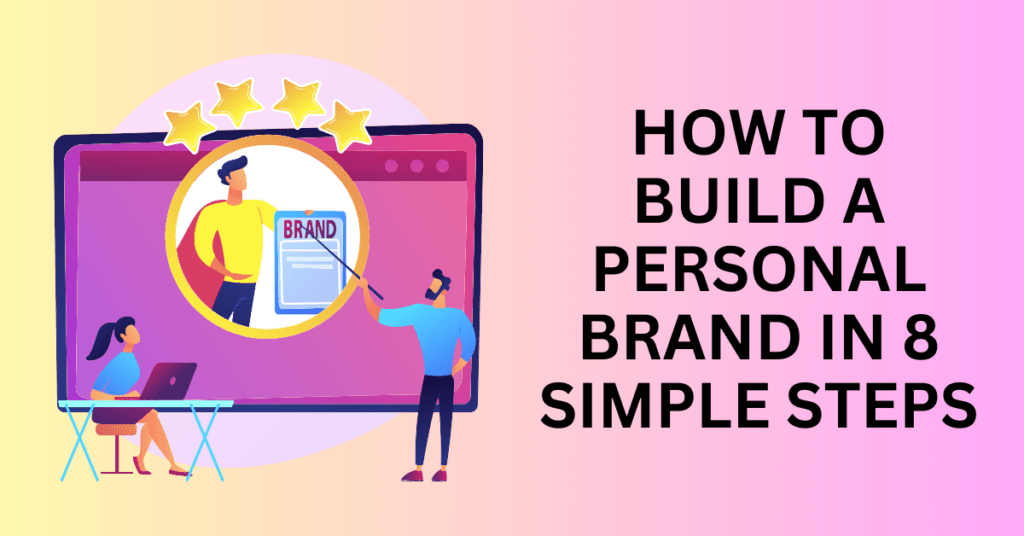Whether you’re a novice website owner or an experienced developer, WordPress offers a user-friendly platform to establish and customize a website tailored to your brand and product promotion needs. The effectiveness of your WordPress website relies heavily on the choices you make regarding its design, features, and visibility in search engines.
WordPress, powering approximately a third of the world’s websites, stands out due to its accessibility. Being free and open-source, it’s available for download and use by individuals and businesses across diverse settings. While initially conceived for blogging, WordPress has evolved into a versatile and scalable platform with a vast selection of general and industry-specific themes and plugins. These tools can significantly expand a website’s capabilities, making it suitable for startups, small businesses, and large corporations alike.
The key to building the ideal WordPress website lies in strategic decision-making around its appearance, functionality, and search engine optimization (SEO) aspects. With its widespread adoption and customizable nature, WordPress empowers users to create websites that effectively represent their brand, engage visitors, and drive business growth. Whether you aim to showcase products, share content, or establish an online presence, WordPress provides the tools and flexibility to achieve your goals efficiently and creatively.
Why You Should Build A WordPress Website

WordPress comprises three fundamental elements that together form the backbone of a website: the WordPress core code, themes, and plugins. The WordPress core code establishes the foundational structure of a website. Themes dictate its appearance and layout, defining everything from colours and fonts to overall design aesthetics. Plugins are instrumental in extending functionality beyond the basic core. This will allow users to integrate diverse features such as payment gateways via WooCommerce, photo galleries, portfolios, and live chat capabilities.
For individuals new to WordPress, particularly those without coding experience, the platform offers a user-friendly dashboard that enables customization and function-setting without getting into the complexities of the core code or style sheets. From this dashboard, users can modify various aspects of their website’s functionality and appearance with ease. However, for developers seeking more modifications, direct access to the site’s files including the core code and style sheets provides the necessary flexibility.
The versatility of WordPress lends itself well to virtually any website purpose imaginable. However, careful attention should be paid to its construction to optimize a WordPress site for discoverability, usability, and engagement. Here are ten essential tips for crafting an exceptional WordPress website that showcases your company effectively and enhances user experience, encouraging repeat visits and customer engagement.
Start Your WordPress Website Today
Why WordPress Theme is Important
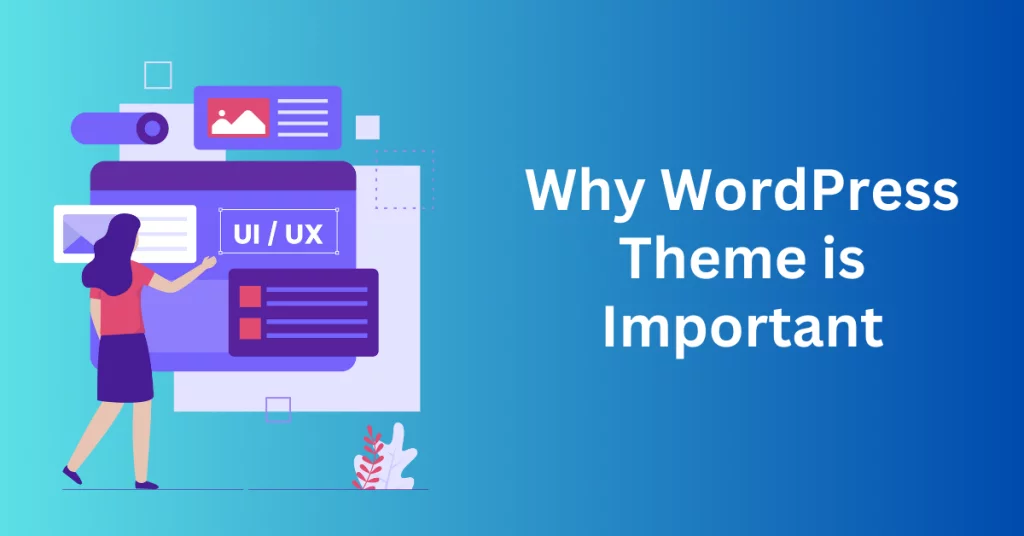
The selection of your website’s theme plays an important role in shaping the overall appearance and user experience of your site. Therefore, choosing a theme that aligns with your brand identity and delivers a seamless user experience is paramount.
WordPress provides convenient access to its theme directory directly from any WordPress site. It offers a vast array of both free and premium themes. Additionally, third-party developers worldwide contribute to the diversity of themes available, presenting users with countless options to explore.
Before committing to a theme, it’s beneficial to invest time in conceptualizing how you envision your website look and how it should reflect your brand. You will need to consider elements such as colour schemes, typography, styling preferences, and imagery that resonate with your brand’s identity. This thoughtful consideration will guide your theme selection process and help ensure cohesion with your brand messaging.
It’s essential to note that switching themes after creating content can sometimes lead to display issues. Therefore, having a well-thought-out plan before diving into theme selection can prevent complications down the road.
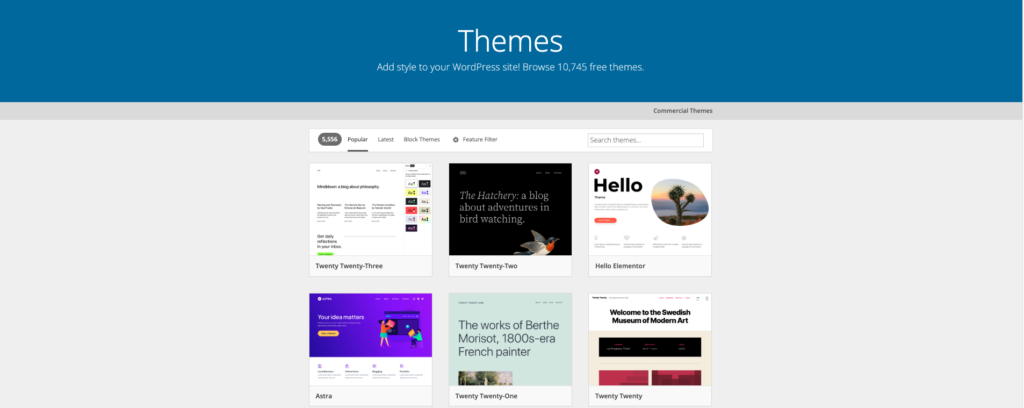
While free themes are suitable for those just starting, investing in a premium theme is highly recommended for business websites. Premium themes typically offer superior quality, advanced customization options, and dedicated support. Whether purchasing a theme outright from a developer or opting for a subscription model, the benefits often include ongoing support, regular theme updates, and additional features that contribute to enhancing your site’s performance.
When choosing a theme, prioritize attributes like lightweight design, fast loading times, and mobile responsiveness. A responsive theme ensures that your website looks and functions optimally across various devices. This will provide visitors with an exceptional browsing experience.
Only Install The Useful WordPress Plugins

WordPress users benefit from a vast selection of plugins available through the WordPress plugin directory and from third-party developers. It offers solutions for virtually every website function imaginable. When curating your suite of plugins, it’s crucial to align your choices with your site’s specific goals, purposes, and overarching considerations such as security and searchability.
While plugins greatly enhance a website’s functionality, WordPress developers advise against overloading a site with excessive non-essential plugins. This is because an excessive number of plugins can adversely affect site performance, potentially causing slowdowns and compatibility issues. Hence, you should focus on incorporating a core set of high-quality plugins that address essential functions pertinent to most websites.
Key plugins to prioritize include:
- SEO (Search Engine Optimization): Enhance your website’s visibility and search engine rankings. This can be done by installing an SEO plugin that enables you to optimize content, meta descriptions, and other crucial elements.
- Spam Blocking: Guard your website against unwanted spam comments and submissions by implementing a reliable spam-blocking plugin. It ensures a cleaner and more secure user experience.
- Social Media Sharing: Simplify content sharing and maximize engagement by integrating a social media sharing plugin. This can allow visitors to easily share your content across various platforms.
- Security: Particularly vital for websites handling transactions or storing sensitive data. You need to invest in robust security plugins to safeguard against threats like malware, unauthorized access, and data breaches.
Depending on your website’s specific objectives, you may require additional plugins tailored to niche functionalities. When selecting plugins, prioritize compatibility with the latest WordPress version and prioritize regular updates to installed plugins. Keeping plugins updated ensures optimal performance, security, and compatibility with evolving WordPress standards.
Start Your WordPress Website Today
Mobile Friendly WordPress Website
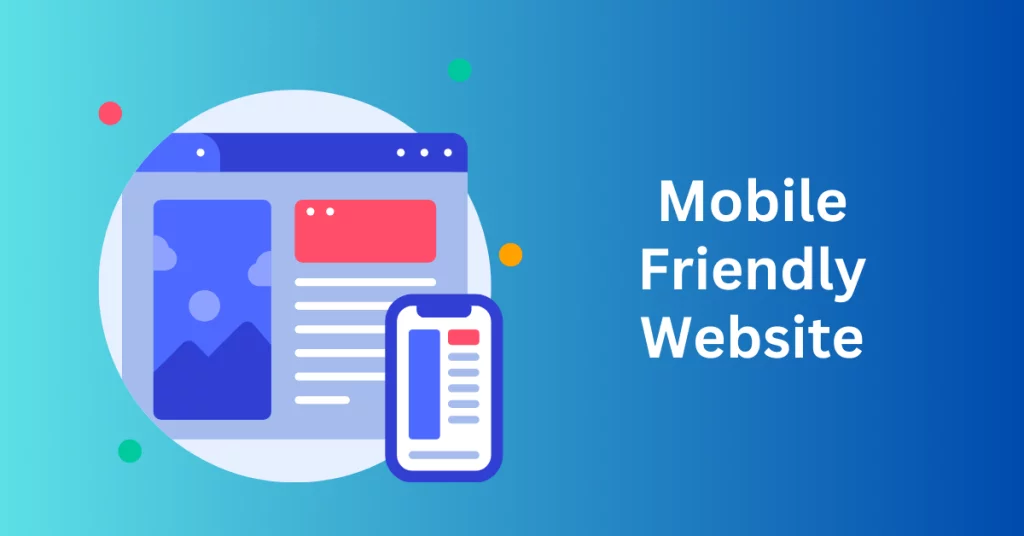
In today’s digital landscape, over half of global website traffic originates from mobile devices. Hence, you need to ensure that your website is mobile-friendly is ready to reach and cultivate user engagement. Mobile users prioritize seamless and responsive browsing experiences. Hence, making mobile optimization a strategic priority for website owners.
When selecting a WordPress theme, prioritize those that are explicitly designed to be mobile responsive. A mobile-responsive theme automatically adjusts its layout and design to suit various screen sizes. This can ensure optimal viewing and functionality across mobile devices. Furthermore, consider themes that can effortlessly pass the Core Web Vitals scores. These are important metrics influencing SEO (Search Engine Optimization) and organic search performance.
Core Web Vitals measure key aspects of user experience, including page load speed, interactivity, and visual stability. Websites that excel in Core Web Vitals tend to rank higher in search engine results. These will lead to increased organic traffic and improved visibility. Therefore, opting for a theme that inherently meets Core Web Vitals criteria is crucial for enhancing your website’s SEO performance and overall user experience.
On the other hand, choosing a theme that meets these standards from the outset can save you from potential challenges and costs associated with retrofitting or customizing themes that fall short of mobile responsiveness or Core Web Vitals requirements. If a theme does not meet these criteria, you can invest in developer services to optimize or customize the theme. However, this will add complexity and expense to your website development process.
Use Analytics Tool To Study Your Website Performance

Analytics software is indispensable for business and commercial websites. It offers critical insights into traffic patterns, user behaviour, and other essential metrics. These insights are invaluable for informed decision-making regarding website development, content creation, and overall digital strategy.
Among the most widely used analytics tools is Google Analytics. It’s a powerful and free platform that can be easily integrated into websites of all types. Google Analytics provides a comprehensive suite of features. It allows website owners to track and analyze key performance indicators such as visitor demographics, traffic sources, popular content, and conversion rates.
In addition to Google Analytics, WordPress users can leverage a range of analytics plugins to understand your website performance. These plugins offer diverse functionalities, from basic traffic statistics to more advanced tracking features tailored to specific business needs.
By installing analytics plugins on WordPress websites, you can gain deeper insights into user interactions, monitor site performance in real time, and identify areas for improvement. Besides, some analytics plugins offer customizable dashboards, automated reporting, and integration with other marketing tools, enhancing the overall effectiveness of data-driven decision-making.
When selecting an analytics plugin for your WordPress site, you should consider factors such as the level of detail provided, ease of use, compatibility with other plugins, and ongoing support and updates. Choose a plugin that aligns with your specific analytics requirements and seamlessly integrates with your existing WordPress setup.
Start Your WordPress Website Today
Lead Generation with WordPress Website
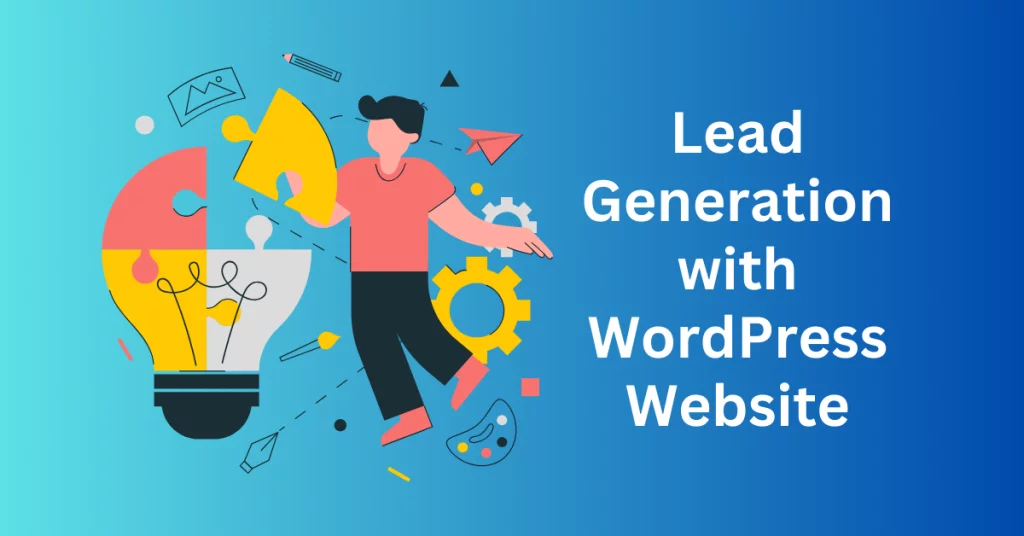
Engaging website visitors and converting them into customers or clients is essential for the success of business and commercial websites. Statistics reveal that 75 percent of visitors who take no action leave a site and never return. This underscores the importance of implementing effective lead-generation strategies.
Lead generation tools play an important role in fostering meaningful interactions between websites and visitors, encouraging ongoing engagement and conversions. These tools include email list builders, opt-in forms, lead magnets, and dedicated landing pages. They collectively facilitate two-way communication and relationship-building with potential customers.
WordPress offers a diverse array of solutions for integrating lead generation functionalities seamlessly into your website. Some WordPress themes are purposefully designed with lead generation in mind. They feature built-in templates for sales pages, squeeze pages, and landing pages optimized for conversion. These themes provide a solid foundation for implementing effective lead-capture strategies.
Moreover, WordPress boasts numerous plugins—both free and premium—that equip websites with robust tools for lead generation. These plugins enable the creation of subscription forms, contact forms, live chat features, email newsletters, and more. They empower you to nurture leads and drive conversions effectively.
Define Your Website Purpose
When starting to create a new website, it’s crucial to define its purpose and align its design and functionality accordingly. Understanding the primary objectives of your website will guide decisions regarding content, features, and overall structure.
Consider the following questions to clarify your site’s purpose:
- Business Marketing: Are you creating a website to promote your business, showcase your services or products, and attract potential customers? A business marketing website typically emphasizes professional presentations, contact information, testimonials, and details about offerings.
- Hobby or Personal Site: Is your website intended as a personal project or hobby site, showcasing your interests, creative work, or personal reflections? Such sites often prioritize personal expression, storytelling, and visual appeal.
- eCommerce Platform: Do you aim to sell products online, requiring features like payment processing, order management, and inventory tracking? eCommerce sites demand specialized functionality to facilitate online transactions securely and efficiently.
- Blog or Content Hub: Are you primarily focused on sharing information, insights, or updates with your audience? Blogs are effective for content-driven websites, offering straightforward publishing tools and opportunities for interaction with readers.
Each type of website requires distinct content and capabilities. For example, blogs are relatively easy to set up and manage, making them ideal for content-focused initiatives. Conversely, eCommerce sites can be complex, especially when managing numerous products and processing online payments.
By understanding and articulating your website’s purpose upfront, you can tailor its design, content, and features to effectively meet your objectives and deliver value to your target audience. Whether it’s driving business growth, sharing personal passions, or facilitating online transactions, a well-defined purpose lays the foundation for a successful and impactful website.
Start Your WordPress Website Today
Choose The Right Plugins
Once you’ve identified the type of website you want to create, the next step is to compile a comprehensive wishlist of features tailored to your specific needs. For instance, if you’re planning to launch a hair salon website, incorporating a WordPress plugin that enables customers to book appointments directly on your site would be highly beneficial.
Similarly, if you’re a blogger aiming to expand your readership, it’s essential to integrate a subscription mechanism that allows readers to receive email notifications whenever you publish new content. This subscription feature can significantly boost engagement and audience growth over time.

WordPress boasts an impressive array of plugins (with over 52 thousand available!), each catering to distinct functionalities. To leverage these tools effectively, start by identifying the critical features required for your website. Then, conduct thorough research to explore the diverse WordPress plugin options designed to fulfil your specific needs.
Consider an eCommerce website as an example. When searching for eCommerce plugins on WordPress, numerous options will surface. Some plugins are more suitable for businesses aiming to manage a vast inventory of products, while others are ideal for smaller enterprises with limited product offerings.
Beyond functionality, it’s crucial to evaluate the cost of these plugins and ensure they align with your website development budget. By carefully selecting plugins based on functionality, suitability, and affordability, you can optimize your website’s performance and enhance user experience effectively.
Focus on UI, UX and Design
The appearance of your website plays a critical role in your planning process. This is especially important when building a site for a business, as it significantly contributes to branding. WordPress offers a vast selection of pre-designed templates. This is advantageous because it simplifies much of the design process for you. The template provides a structured starting point. It allows you to focus on customization to match your brand’s colours, fonts, and overall style.
For businesses, a strategic approach to selecting site colours and fonts involves aligning them with your company’s logo design. This approach fosters visual consistency across your web pages, subtly reinforcing your brand identity. Consistent branding not only enhances professionalism but also strengthens the overall visual appeal and user experience of your website.
Start Your WordPress Website Today
How To Create a User-Friendly Structure For Your WordPress Website
Now that you’ve solidified the details of your website, it’s time to start on structuring your site’s layout effectively. This involves strategically mapping out your website’s navigation, which is crucial for facilitating a seamless user experience. Here’s a step-by-step guide on how to map your site:
1. Clear Main Menu
Start by listing out the primary menu items that will appear prominently on your website’s navigation bar. These items typically represent the main sections or categories of your site. For instance, common main menu items could include “Home,” “About Us,” “Services,” “Products,” “Blog,” and “Contact.”
2. Categorize Your Items with Submenu
Under each main menu item, decide on the corresponding submenu items that will appear when visitors hover or click on the main menu. Submenu items provide more detailed navigation within each main category.
For example, if “Services” is a main menu item, the submenu might include specific services such as “Haircut,” “Coloring,” and “Styling” for a salon website.
3. Homepage Content Layout
Determine the content you want to feature prominently on your homepage and arrange it strategically below the main menu. The homepage serves as the gateway to your site, so make sure the most engaging and important content is immediately visible.
For a business site, this could be a compelling call to action (e.g., “Book Now,” “Shop Now”) or a featured promotion. For a hobby website like photography, showcase a captivating slideshow of your latest work.
4. Engage with Your Visitors
Make sure the content placed on your homepage is visually appealing and engaging. Use high-quality images, compelling headlines, and clear calls to action to capture visitors’ attention and encourage them to explore further. For instance, incorporate vibrant visuals for a photography hobby site or highlight customer testimonials for a business site.
By mapping out your site’s structure and content placement, you not only enhance user navigation but also streamline the website creation process. This structured approach ensures that your WordPress journey remains focused and efficient, guiding you precisely to input the various elements that bring your website to life.
Content Planning For Your WordPress Website
To streamline your website-building process and enhance efficiency, it’s important to begin with careful content planning for your web pages. Start by outlining the main information or message you want to convey on each page. Consider aligning the theme of each page with your menu categories to ensure a cohesive structure and intuitive navigation experience for your visitors.
To maintain organization throughout the content creation process, write your content separately and then copy and paste it into your WordPress pages. Focus on crafting concise and engaging text. Then, aim for text blocks that are between 40 to 55 characters per line. This equates to about 8 to 11 words per line for optimal readability and visual appeal on your website.
Visualizing the placement of your content within your chosen website template can greatly assist in streamlining the integration process. By jotting down your prepared content, you’ll gain a clearer understanding of how each piece fits within the overall layout and design of your web pages.
Another essential step is to gather all necessary files, such as images or PDF documents, into a dedicated folder on your computer. This organized approach will make it easier and faster to upload these files to your website. Having all your files in one place eliminates the need to search for them individually, saving you valuable time during the uploading process.
By following these structured steps, you’ll establish a more efficient workflow for building your website. This approach will not only save you time but also ensure that your website content is well-organized and visually appealing to your audience.
Start Your WordPress Website Today
Final Thoughts – 10 Tips for Building an Awesome WordPress Website
In conclusion, implementing these 10 tips for building an awesome WordPress website can transform your online presence and elevate your brand’s impact. By prioritizing responsive design, optimizing for speed, and focusing on user experience, you can create a website that captivates visitors and encourages engagement. Leveraging SEO strategies and integrating social media effectively will boost your site’s visibility and reach.
Furthermore, ensuring security and regular updates will safeguard your website and maintain its performance over time. Paying attention to content quality, leveraging multimedia elements, and encouraging feedback through interactive features will enhance user satisfaction and retention.
Lastly, embracing analytics and continuous improvement will enable you to adapt and refine your website based on real-time data and user insights. By incorporating these tips into your WordPress website development strategy, you’ll be well-equipped to build and maintain a dynamic and successful online presence that resonates with your audience and achieves your business objectives.
